Sandalwood Essential Oil Benefits: 15 Skin, Hair, & Health Uses
The benefits of this potent oil go beyond aromatherapy, stress relief, and acne management.
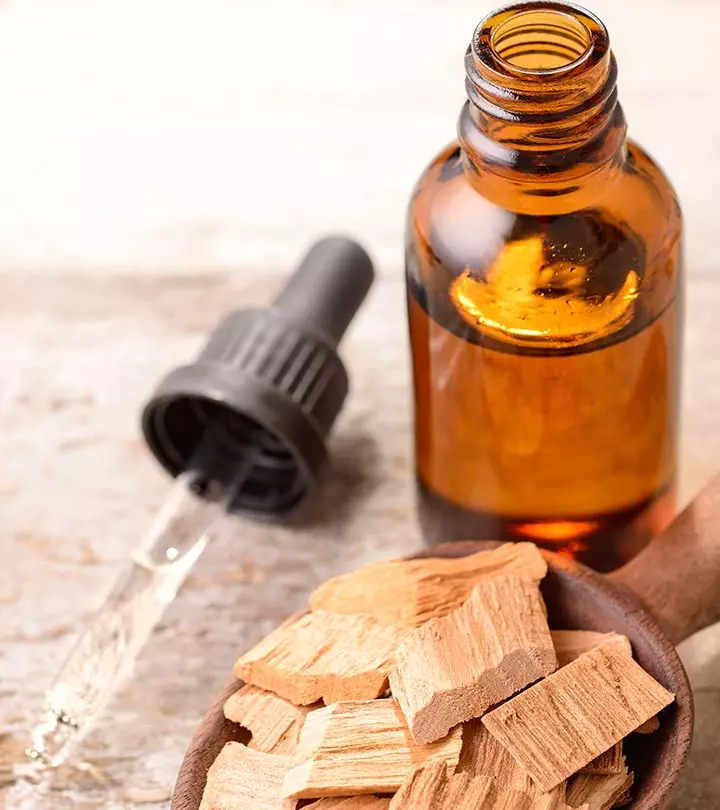
Image: Shutterstock
Sandalwood essential oil benefits might make you want to use it. Many countries export this oil as a valuable commodity, and it is treasured for its fragrance and therapeutic properties (1).
You can find different types of sandalwood. East Indian sandalwood oil obtained from Santalum album has long been used to treat many health problems (2). It has potent anti-inflammatory, antimicrobial, antiviral, and antioxidant properties. It may also reduce early signs of aging and lower blood sugar levels.
Sandalwood oil is used in traditional Chinese and Ayurvedic medicines to address various conditions. In the United States, the Food and Drug Administration has classified it as a natural flavoring agent, and in Australia, the Therapeutic Goods Administration has classified it as a medicine (1).
This article discusses the benefits of sandalwood essential oil, recommended dosage, how to use it, and risks. Scroll down.
 Know Your Ingredient: Sandalwood Oil
Know Your Ingredient: Sandalwood OilWhat Is It?
It is an essential oil derived from the wood and roots of the sandalwood tree.
What Are Its Benefits?
It results in improved skin health, mental wellbeing, and hair growth, and it helps fight inflammation.
Who Can Use It?
Adults can safely use it in the right concentration.
How Often?
It can be consumed daily in moderate quantities.
Caution
Keep out of reach of children. Pregnant or breastfeeding women should consult with a doctor before using it.
In This Article
What Are The Medicinal Properties Of Sandalwood Essential Oil?
Sandalwood essential oil is (2), (3):
- Anti-inflammatory
- Antimicrobial
- Antihyperglycemici A substance or agent that reduces glucose levels in the blood to normal and helps treat diabetes.
- Antioxidant
- Antineoplastic
- Antiviral
- Anti-tanning
- Anti-aging
- Skin softening
- Anti-acne
- A Prickly heat solution
- Chemopreventive
Key Takeaways
- Sandalwood oil may help in reducing stress and anxiety.
- It may treat acne as it has antimicrobial properties.
- Sandalwood oil may promote sleep and reduce anxiety.
- It may protect against oxidative stress and treat inflammatory disorders like psoriasis..
What Are The Benefits Of Sandalwood Essential Oil?
1. May Improve Complexion

Alpha-santalol, another major constituent of sandalwood oil, inhibits tyrosinase and cholinesterase (enzymes that catalyze the production of melanin pigments). Due to this activity, the oil is an active ingredient in several skincare products (4).
Sandalwood essential oil is also enriched with sesquiterpenoids (molecules that deliver oxygen molecules to cells), which act as coolants and relaxants (4).
Some believe sandalwood oil may also help remove dark spots, although there is no research to support this.
2. May Treat Acne
Sandalwood essential oil has anti-inflammatory, antimicrobial, and anti-proliferativei A substance that prevents malignant cell growth in surrounding tissues to protect the body from further damage. properties.
Hence, it can be a promising treatment for acne and other skin problems like eczema, psoriasis, warts, etc. (1).
Adolescents and adult subjects with moderate facial acne who used sandalwood oil saw an improvement in their symptoms without any side effects (1).
Research indicates that sandalwood oil is well tolerated, safe, and has rejuvenating properties. The oil is now being manufactured in compliance with the current Good Manufacturing Practices (1).
3. May Stimulate Hair Growth
Sandalwood oil was found to reduce the number of mast cells in mice studies.
These cells are distributed around the hair follicles and could be responsible for shortening the hair growth stage (5). The oil could also promote hair growth in mice (5).
Researchers from the University of Manchester found that a sandalwood odorant could stimulate a certain receptor (called OR2AT4) in the body, which may prolong hair growth (6). More studies are needed to understand how well this odorant promotes hair growth in humans.
4. May Promote Sleep
Santalol, an active component of the oil, helps reduce the total waking time and increases the total non-rapid eye movement (NREM) phase of sleep
(7).
Santalol is absorbed into the blood via the respiratory mucosa and is hence effective in promoting sleep. The essential oil can help individuals who have trouble falling asleep (7).
5. May Reduce Anxiety
Aromatherapy using sandalwood oil is effective in soothing and reducing anxiety. In studies, sandalwood oil (along with other oils) could reduce anxiety in women who were undergoing breast biopsies and in palliative care patients (8), (9).
Though the results seemed to support the idea that sandalwood oil may reduce anxiety, more large-scale studies are warranted (9).
6. May Fight Inflammation
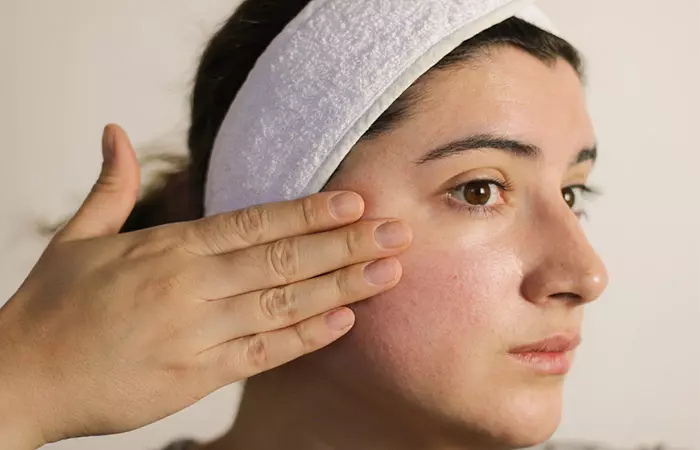
Sandalwood oil inhibits oxidative enzymes and protects against oxidative stress. As per research, the oil suppresses the production of several pro-inflammatory chemokines and cytokines (compounds produced during inflammation) (1).
7. May Treat Urinary Tract Infections
Sandalwood oil also possesses antipyretici A drug used to help reduce fever or high body temperature and pain resulting from it. It does not affect the normal body temperature. , antiseptic, and diuretic properties and can be effective in treating diseases of the urinary tract (10).
It is also believed that sandalwood oil may have a disinfecting action that treats infections of the urinary tract. However, more research is warranted here.
8. Could Act As An Antiseptic Agent
Sandalwood oil has antiseptic properties. It could be effective in the treatment of bronchitis, cystitis, and dysuria (10).
As it is a potent antiseptic and astringent, it may be used to treat inflammatory skin disorders like psoriasis (11).
9. May Boost Memory
Sandalwood essential oil can be used to promote mental clarity and boost memory (12).
A study conducted using mouse models has demonstrated significant improvement in learning and memory following the use of the essential oil. This was especially true during the growth spurt period (13).
10. May Control Blood Pressure Levels
In a study, different types of sandalwood essential oils could significantly reduce systolic blood pressure. The oil, along with other essential oils, could help in the recovery from stress (14).
Some research shows that a specific type of sandalwood powder contains mildly sedative ganglionic blockers or hypotensive agents that may help lower blood pressure (12).
11. Could Reduce Stress
Aromatherapy using essential oils has been effective in reducing stress.
Researchers investigating the physiological effects of sandalwood essential oil on human beings found that the oil could alleviate the physiological reactions to stress and help with meditation. The oil was also found to ease recovery after being exposed to stress (14).
12. May Help Relieve Menopause Symptoms

Essential oils have specific properties that ease and balance menopausal symptoms. Sandalwood oil contains sesquiterpenols that help in calming your nervous system down – and this might help ease menopausal symptoms like hot flashes (15).
In clinical studies, the oil has also been found to offer relaxing properties (15).
13. May Reduce Body Odor
There is little research here. Some reports suggest that the delightful aroma of sandalwood powder may help rid of body odor that could come from excessive sweating (3).
The oil may also alleviate unpleasant body odor, though research is limited. It is valued highly for its fragrant heartwood and is used in perfumes for its excellent fixative properties (3).
Insufficient Evidence For
14. May Help Relieve Stomach Issues
Sandalwood essential oil is believed to have been used in Chinese medicine to treat stomach pain and vomiting. It is thought that the antiviral and antibacterial activities of the oil help fight against Helicobacter pylori (the leading cause of stomach ulcers).
15. May Boost Immunity
Aromatherapy with essential oils like sandalwood is thought to boost your immunity by prompting your body towards healing itself. Anecdotal evidence suggests that the oil promotes white blood cell production, fights microorganisms, and also improves immune responses in your body. However, more research is warranted in this aspect.
 Trivia
TriviaThe benefits are amazing, aren’t they? Sandalwood essential oil has other interesting uses too. Check them out in the following section.
What Are The Other Known Uses Of Sandalwood Essential Oil?

- In Massaging
Sandalwood oil has been extensively used in aromatherapy and Ayurvedic massages. The oil has been reported to reduce anxiety in patients under palliative care who were treated with aromatherapy massages (9). Massaging with sandalwood essential oil also makes your skin very soft (3).
- In Cosmetics
The cosmetic use of sandalwood essential oil has been described in ancient literature. It has been used to make soaps, perfumes, and aromatherapy products. Its wide range of medicinal properties makes sandalwood essential oil one of the best and most reliable ingredients in cosmetics and beauty products (3).
Heather Grant, a Youtuber, talks about how she likes to benefit from sandalwood oil. She shares in her video, “It’s a really great skin oil, it’s one that guys I put in my moisturizer because it has a lot of anti-aging properties and can help with blemishes and scars and things like that, it’s just a really brilliant skin oil so it’s one that I use on my face and in my skincare (i).”
- In Ayurveda
Sandalwood oil has been used in Ayurvedic massages and medicines to treat various ailments, such as diarrhea, intrinsic hemorrhage bleeding piles, vomiting, poisoning, hiccoughs, urticariai An itchy skin rash caused by food, medicines, or other allergic irritants. It is also known as hives. , eye infections, and the inflammation of umbilicus (12).
- In Bath
Sandalwood oil has maintained the original fragrance and properties of soaps intact. The essential oil provides smoothening, hydrating, anti-aging, and moisturizing effects. It also has excellent cleansing, toning, and astringent properties, which make it a prominent ingredient in soaps and creams (3).
- Ingestion
Sandalwood essential oil has been long used in food as a flavoring agent. It has no reported adverse effects and is considered safe (16).
- In Perfumes
Sandalwood essential oil has a sweet, powerful, and long-lasting fragrance (12). Due to its excellent fixative properties, sandalwood oil has been used to make high-class perfumes (3).
- In Aromatherapy
Sandalwood essential oil has been widely used as an aromatherapy agent. Its main component is alpha-santalol, whose antimicrobial properties make it an ideal ingredient in aromatherapy products (3).
 Quick Tip
Quick TipThe uses of the essential oil are extensive. But we recommend you check the next section as well. The oil might show some adverse effects in some individuals, though they aren’t serious.
What Are The Side Effects Of Sandalwood Essential Oil?

A few possible side effects of the oil could be dermatitis and itching. In animal studies, the oil was also found to be irritating to the skin (17).
Anecdotal evidence suggests that the oil may also cause gastrointestinal distress, although this has not been proven.
Certain oils used in aromatherapy, in general, were also found to be likely to cause seizures, coma, and CNS depression in animals (18). If sandalwood oil would have the same effects is yet to be studied.
Note: Conduct a patch test before widely using it if you are new to sandalwood oil. To check for any reaction, apply a small amount of diluted sandalwood oil to a small area of skin and wait 24 hours. Ensure getting medical advice, particularly if you have allergies, sensitive skin, are pregnant or nursing, or are susceptible to any of the conditions mentioned above.
What Is The Recommended Dosage Of Sandalwood Oil?
Though the ideal dosage of the oil is not proven yet, some believe taking 1 to 1.5 grams of the oil every day (for a maximum period of six weeks) can help treat urological problems.
As a flavoring ingredient, its recommended dosage is 0.0074 mg of the oil per 1 kg (16).
There is no information on potential drug interactions with the use of this oil.
If you are ready to enjoy the benefits of sandalwood essential oil and are wondering about its price, check out the next section.
How Much Does Sandalwood Oil Cost?
Sandalwood oil is known for its high cost, as it is derived from the heartwood of sandalwood trees, which can take many years to mature before they can be harvested for oil production. Its price can vary depending on factors such as the quality of the oil, the region it comes from, and market conditions.
A study suggests that the sandalwood oil’s high price may also be due to the difficulty of obtaining its raw material due to previous excessive exploitation. It further states that good-quality sandalwood oil should have the name Santalum album as its source, and its price should not be less than the price of the oils sold by reliable distributors (19).
Infographic: Sandalwood Oil Preparation And Uses
Sandalwood oil is not only preferred for its aroma but also for its benefits. It is one of the important ingredients used in skin and hair care practices for its positive effects. If used as directed, it can also promote overall health.
The following infographic provides information about the preparation and uses of sandalwood oil. Illustration: StyleCraze Design Team
Sandalwood oil benefits are numerous. It has antimicrobial, antioxidant, anti-inflammatory, aphrodisiac, and antispasmodic properties. Sandalwood oil helps manage acne, reduces body odor, promotes sleep, boosts immunity, relieves stress, and helps in relaxation. One popular way to use it is in a sandalwood face pack, which can help soothe the skin, reduce inflammation, and leave your face feeling refreshed. It also stimulates hair growth, reduces anxiety, helps combat inflammation, and helps treat urinary tract infections. Sandalwood oil is majorly used in aromatherapy and cosmetics. However, it may trigger dermatitis and itching in some. Hence, caution is advised. But if you are not allergic to sandalwood oil, you can include it in your beauty regimen to reap its benefits.
Frequently Asked Questions
What essential oils can you blend with sandalwood essential oil?
You can mix the following essential oils with sandalwood essential oil:
- Bergamot
- Geranium
- Vetiver
- Lavender
- Myrrh
- Ylang-ylang
- Rose
How to make sandalwood essential oil at home?
Purchase sandalwood chips or sandalwood powder online or from health stores. If you have purchased sandalwood chips, use a mortar pestle or a coffee bean grinder to crush them. Mix the powder with a cup of olive oil and let it sit for a week. Keep shaking it occasionally.
Strain the mixture and push down the sandalwood powder to extract as much oil as possible. Store this home-made sandalwood essential oil in a glass bottle (in a cool, dark place). Remember that the homemade oil can be as potent as one that you buy from the store – and it can be strong enough to cause allergic reactions. Thus, exercise caution. Please do a patch test before using it.
Why is sandalwood essential oil so expensive?
A short supply and a high demand for sandalwood are the main reasons the essential oil is expensive. Also, it takes about 15 years for a sandalwood tree to produce a viable quantity of heartwood. Harvesting takes over 25 to 30 years.
Can sandalwood essential oil help with weight loss?
There is no research stating that the oil may help with weight loss.
Can I apply sandalwood oil directly on the skin?
No, you need to mix sandalwood oil with a carrier oil (coconut oil or olive oil) to dilute it before applying it to your skin.
Can sandalwood oil remove dark circles?
Though there are no specific studies to prove this claim, the anti-inflammatory properties of sandalwood oil may help reduce the appearance of dark circles.
Does sandalwood oil clog pores?
Since sandalwood oil is a non-comedogenic oil, it does not clog pores unless you use it excessively.
Does sandalwood oil remove tan?
Yes, sandalwood oil can help remove tan as it is found to have the potential to reduce the abnormal pigmentation associated with aging and sun exposure (1).
Illustration: Sandalwood Oil Benefits, Uses, Side Effects, And Dosage
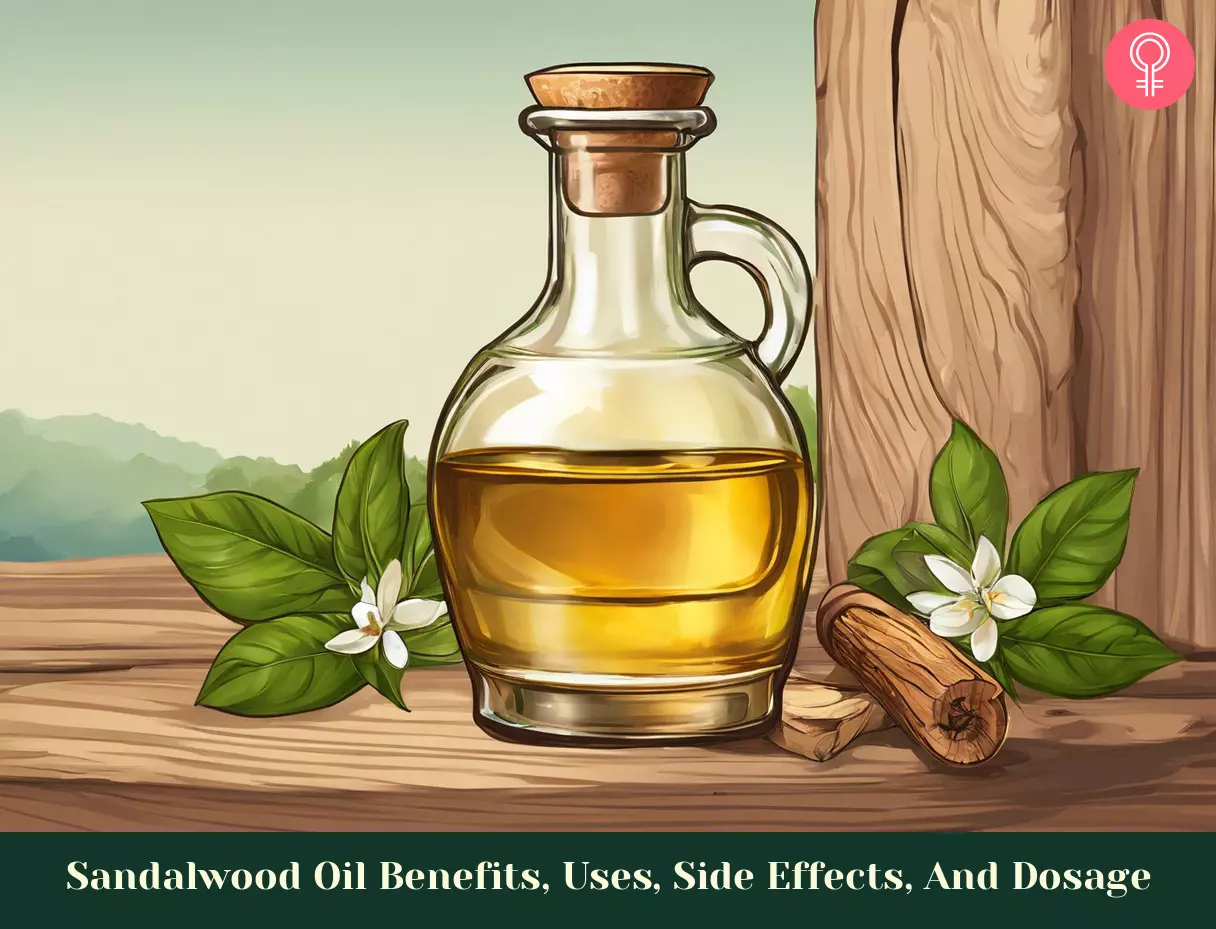
Image: Stable Diffusion/StyleCraze Design Team
References
Articles on StyleCraze are backed by verified information from peer-reviewed and academic research papers, reputed organizations, research institutions, and medical associations to ensure accuracy and relevance. Read our editorial policy to learn more.
- Sandalwood Album Oil as a Botanical Therapeutic in Dermatology, The Journal of Clinical and Aesthetic Dermatology, US National Library of Medicine, National Institutes of Health.
https://www.ncbi.nlm.nih.gov/pmc/articles/PMC5749697/ - East Indian sandalwood (Santalum album L.) oil confers neuroprotection and geroprotection in Caenorhabditis elegans via activating SKN-1/Nrf2 signaling pathway, Rsc Advances, US National Library of Medicine, National Institutes of Health.
https://www.ncbi.nlm.nih.gov/pmc/articles/PMC6171454/ - WHITE SANDAL (SANTALUM ALBUM L.), A PRECIOUS MEDICINAL AND TIMBER YIELDING PLANT : A SHORT REVIEW, Plant Archives.
http://plantarchives.org/PDF%20181/1048-1056%20(PA3%203612).pdf - Critical review of Ayurvedic Varṇya herbs and their tyrosinase inhibition effect, Ancient Science of Life, US National Library of Medicine, National Institutes of Health.
https://www.ncbi.nlm.nih.gov/pmc/articles/PMC4623628/ - Hair Growth-Promoting Effects of Lavender Oil in C57BL/6 Mice, Toxicological Research, US National Library of Medicine, National Institutes of Health.
https://www.ncbi.nlm.nih.gov/pmc/articles/PMC4843973/ - Olfactory receptor OR2AT4 regulates human hair growth, Nature Communications.
https://idp.nature.com/authorize?response_type=cookie&client_id=grover&redirect_uri=https%3A%2F%2Fwww.nature.com%2Farticles%2Fs41467-018-05973-0 - Effect of santalol on the sleep-wake cycle in sleep-disturbed rats, Japanese Journal of Psychopharmacology, US National Library of Medicine, National Institutes of Health.
https://pubmed.ncbi.nlm.nih.gov/?term=sandalwood+oil+for+sleep - Aromatherapy With Essential Oils, National Center for Biotechnology Information, National Institutes of Health.
https://www.ncbi.nlm.nih.gov/books/NBK65874/ - Evaluating the effectiveness of aromatherapy in reducing levels of anxiety in palliative care patients: results of a pilot study, Complementary Therapies in Clinical Practice, US National Library of Medicine, National Institutes of Health.
https://pubmed.ncbi.nlm.nih.gov/16648093/ - Status and Cultivation of Sandalwood in India, USDA, U.S. Forest Service.
https://www.fs.fed.us/psw/publications/documents/psw_gtr122/psw_gtr122_rai.pdf - East Indian Sandalwood Oil Is a Phosphodiesterase Inhibitor: A New Therapeutic Option in the Treatment of Inflammatory Skin Disease, Frontiers in Pharmacology, US National Library of Medicine, National Institutes of Health.
https://www.ncbi.nlm.nih.gov/pmc/articles/PMC5854648/ - SANTALUM ALBUM LINN: A REVIEW ON MORPHOLOGY, PHYTOCHEMISTRY AND PHARMACOLOGICAL ASPECTS, International Journal of PharmTech Research, Academia.
https://www.academia.edu/2604219/Santalum_album_Linn_A_review_on_morphology_phytochemistry_and_pharmacological_aspects - Sandalwood oil treatment during growth spurt period improves learning and enhances memory, ResearchGate.
https://www.researchgate.net/publication/288134775_Sandalwood_oil_treatment_during_growth_spurt_period_improves_learning_and_enhances_memory - A Pilot Study on the Physiological Effects of Three Essential Oils in Humans, Natural Product Communications, US National Library of Medicine, National Institutes of Health.
https://pubmed.ncbi.nlm.nih.gov/30549622/ - MENOPAUSE: UNDERSTANDING AND MANAGING THE TRANSITION USING ESSENTIAL OILS VS. TRADITIONAL ALLOPATHIC MEDICINE, Australian College of Health Sciences.
https://achs.edu/mediabank/files/melissa_clanton.pdf - Safety assessment of sandalwood oil (Santalum album L.), Food and Chemical Toxicology, US National Library of Medicine, National Institutes of Health.
https://pubmed.ncbi.nlm.nih.gov/17980948/ - Sandalwood Oil: Phytochemical and Pharmacological Updates, ResearchGate.
https://www.researchgate.net/publication/317175071_Sandalwood_Oil_Phytochemical_and_Pharmacological_Updates - Unintentional exposure of young children to camphor and eucalyptus oils, US National Library of Medicine, National Institutes of Health.
https://www.ncbi.nlm.nih.gov/pmc/articles/PMC2804512/ - The assessment of quality of products called sandalwood oil based on the information provided by manufacturer of the oil on polish, german, and english websites, US National Library of Medicine, National Institutes of Health.
https://www.ncbi.nlm.nih.gov/pmc/articles/PMC8292048/
Read full bio of Dr. Scott Johnson
Read full bio of Ravi Teja Tadimalla
Read full bio of Arshiya Syeda
Read full bio of Aparna Mallampalli







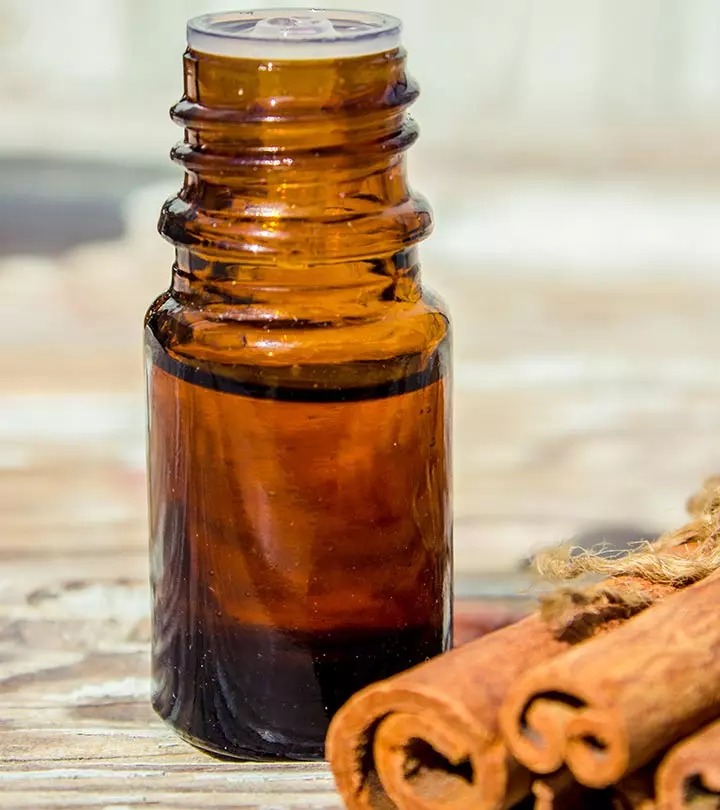

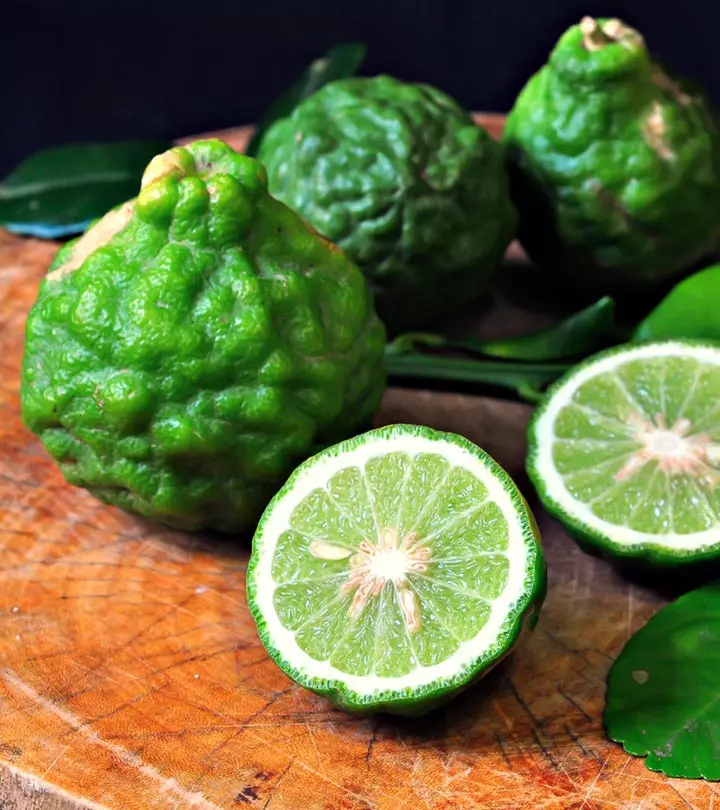
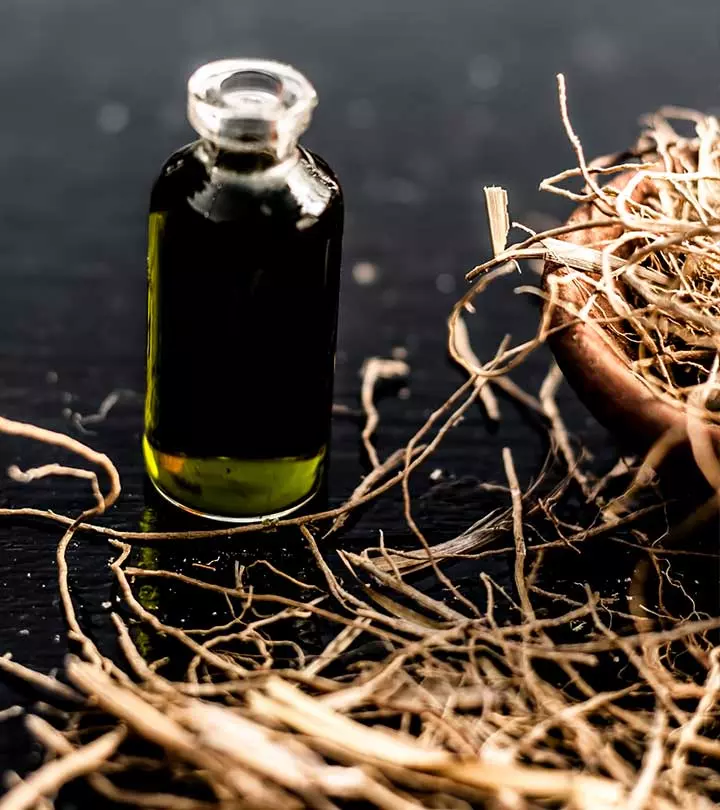

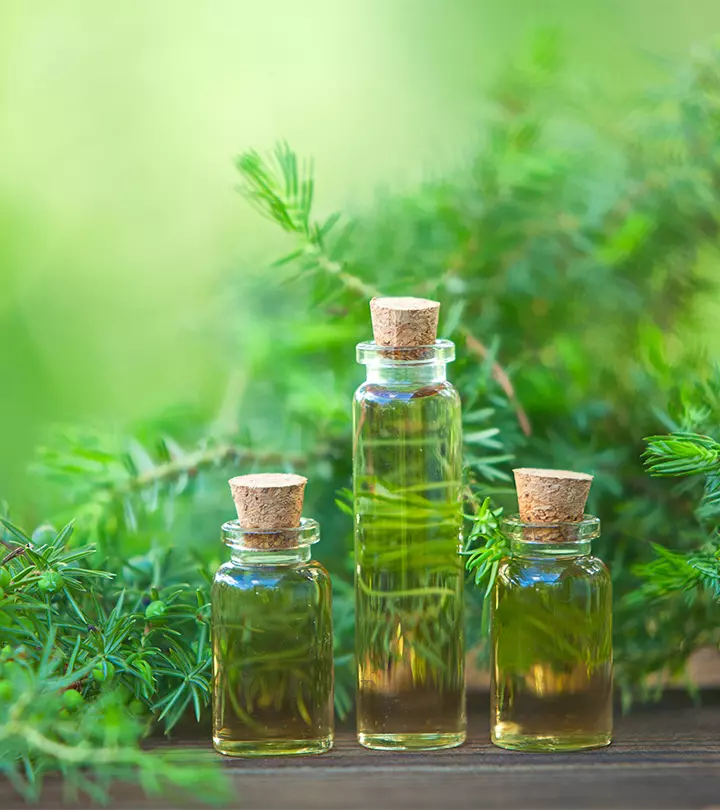

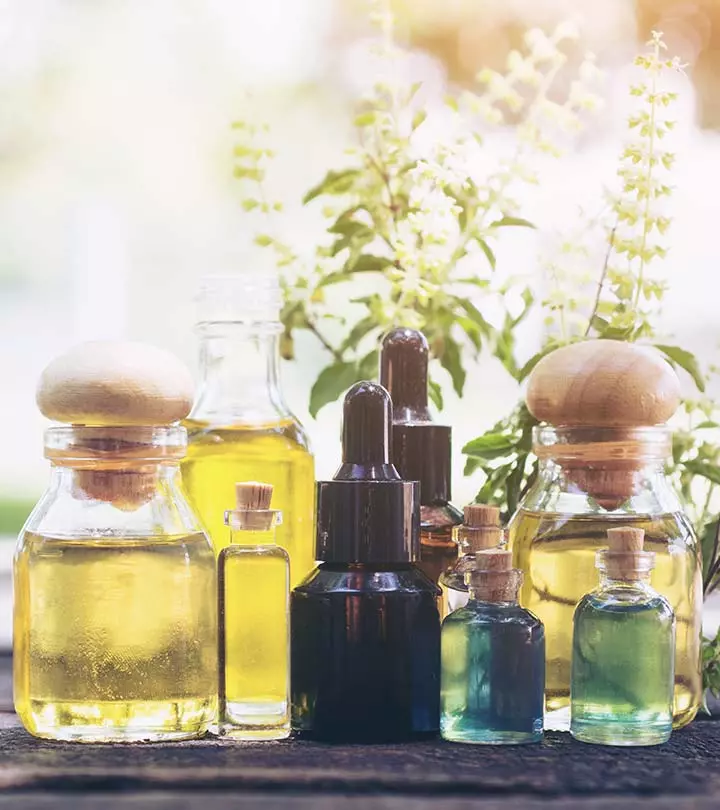
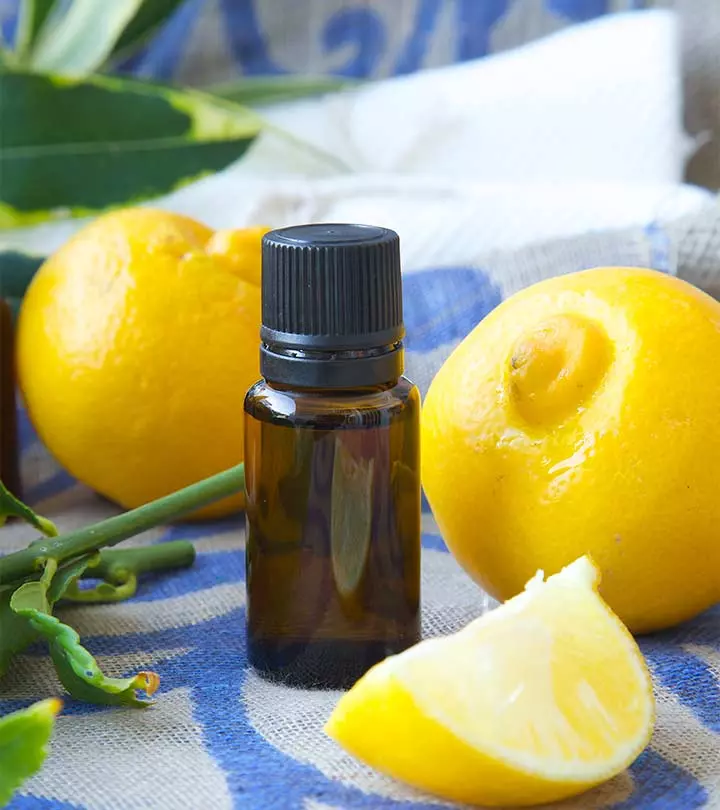
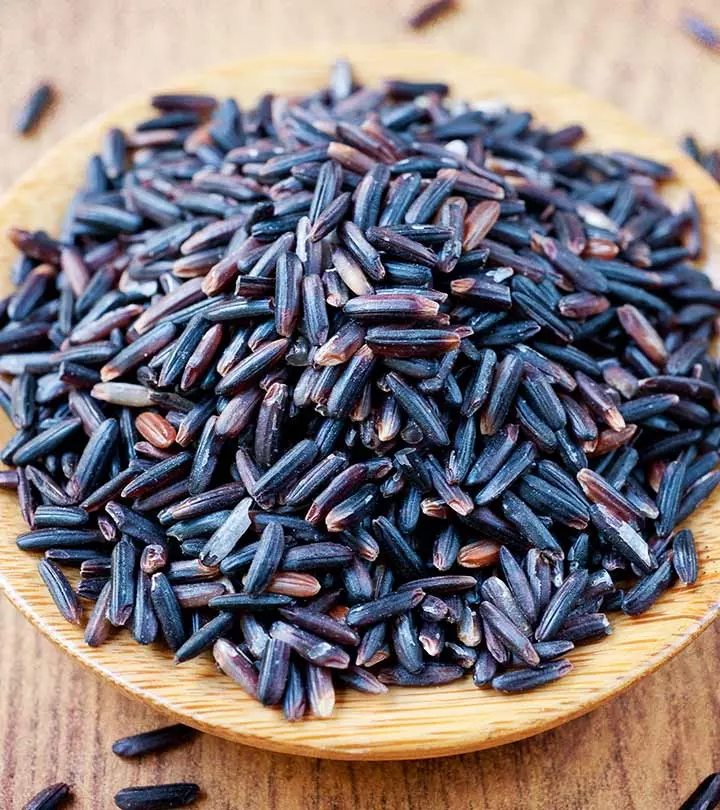
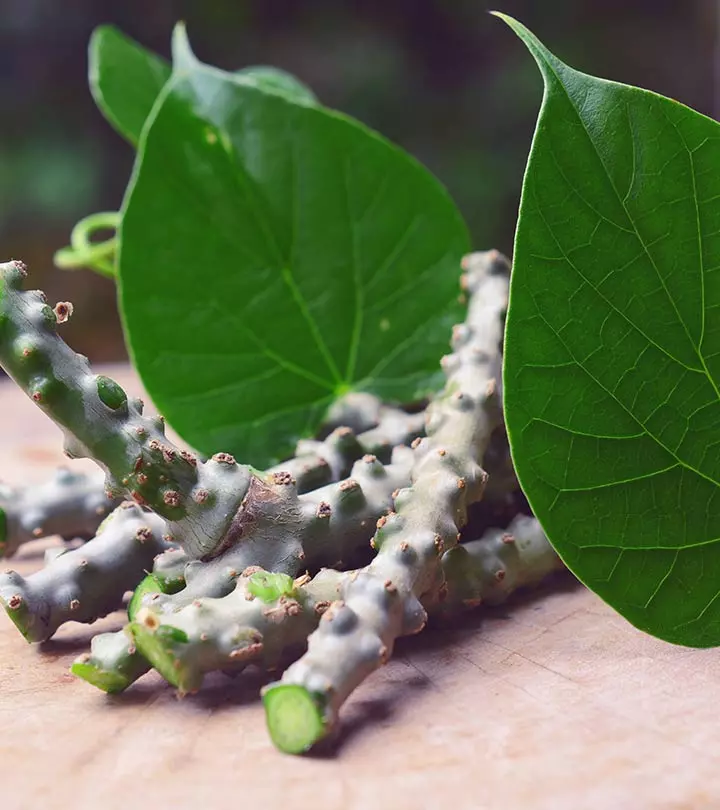

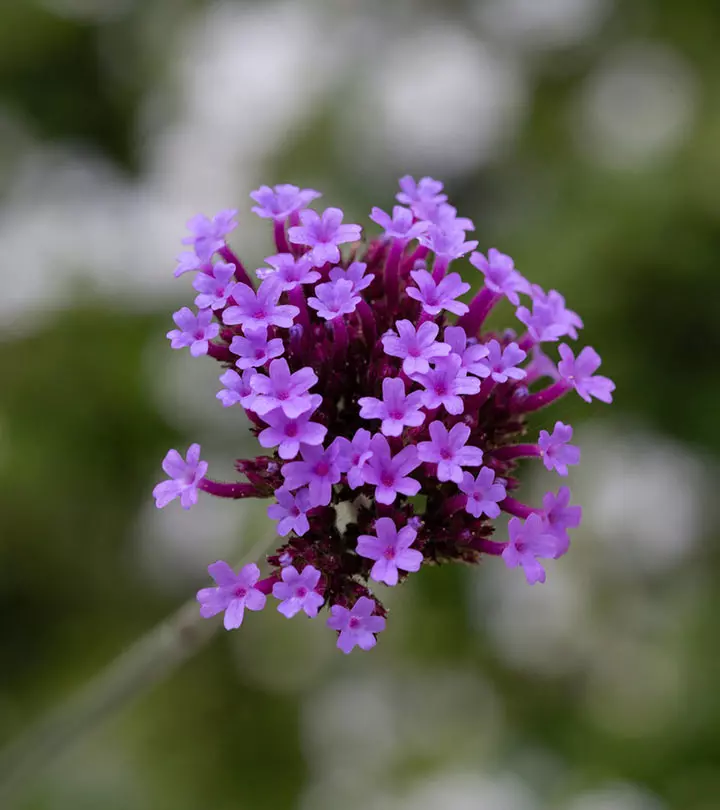
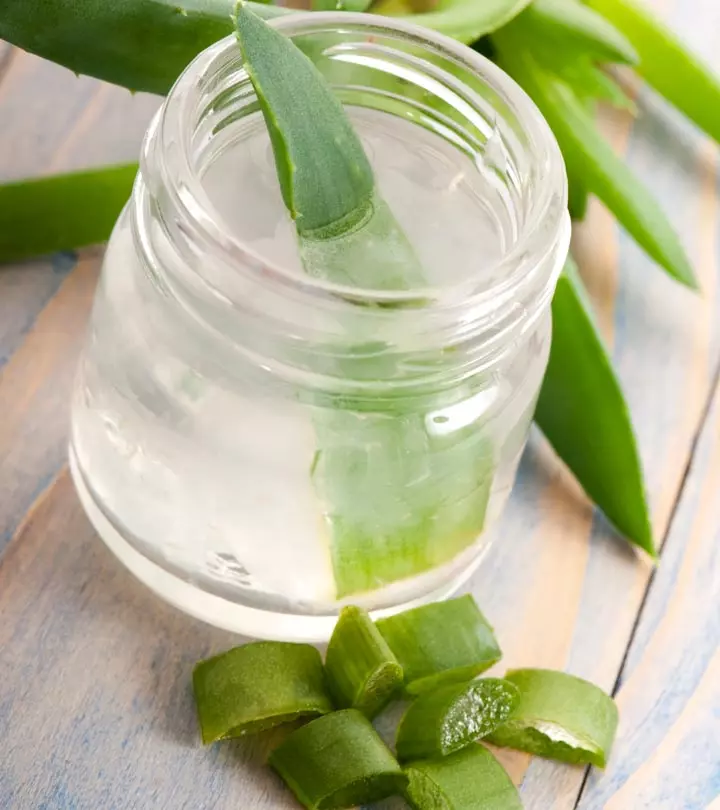

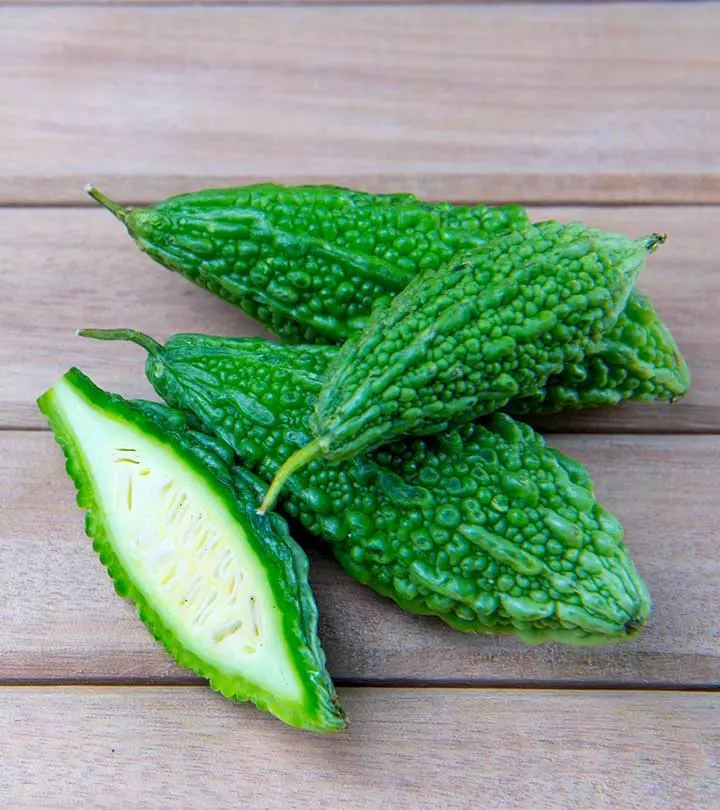
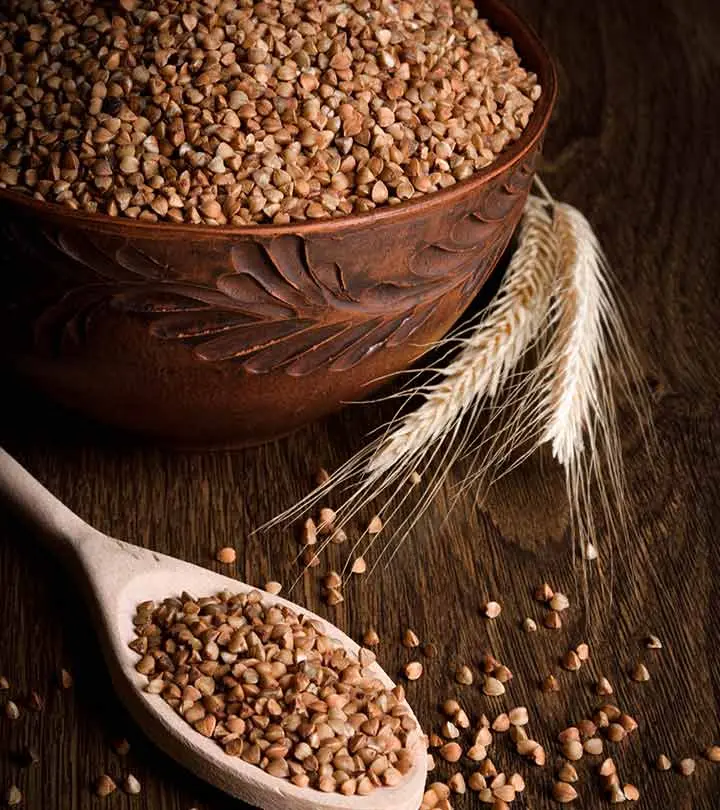

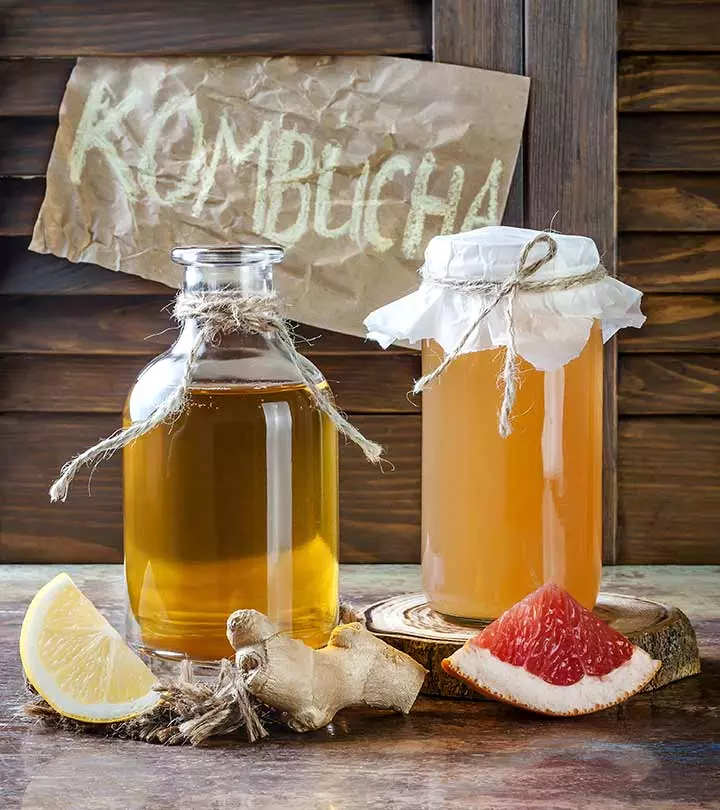
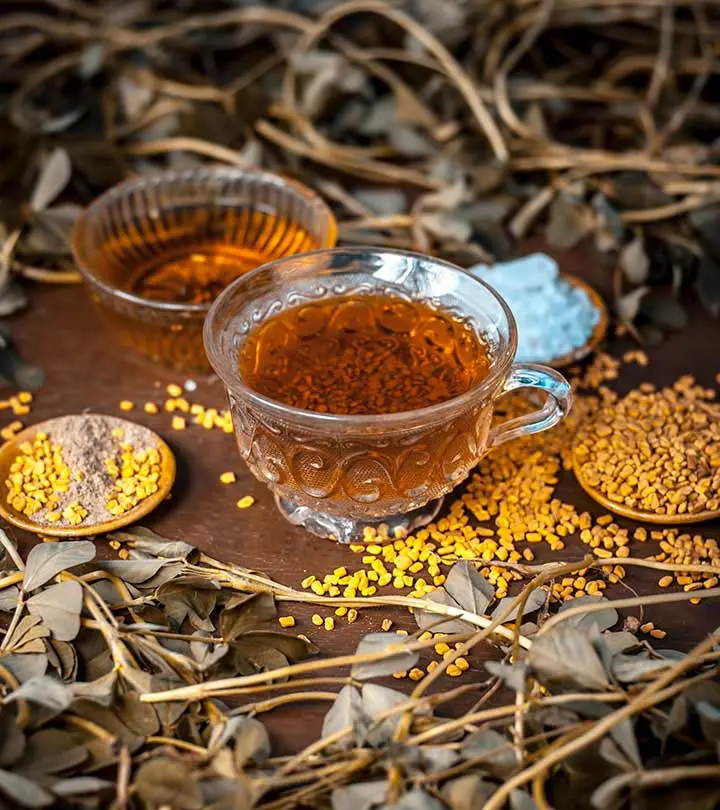
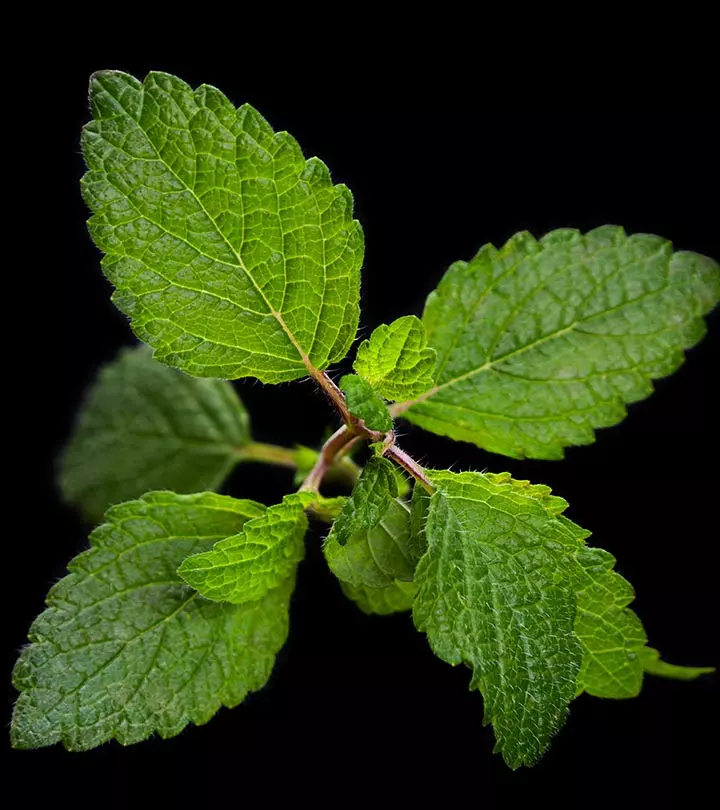
Community Experiences
Join the conversation and become a part of our empowering community! Share your stories, experiences, and insights to connect with other beauty, lifestyle, and health enthusiasts.